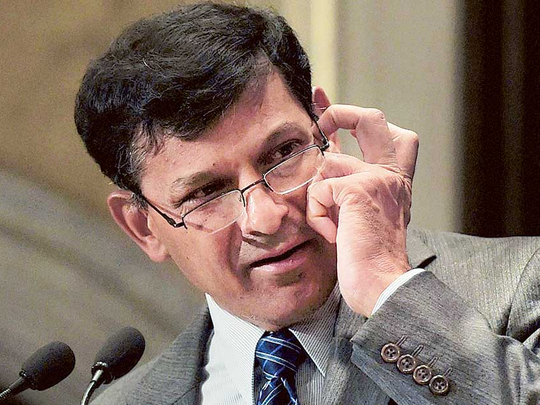
You have to be an Indian to feel the raging debate about the exit of Reserve Bank of India’s 23rd governor, Raghuram Rajan. In the 68 years of an independent India, there has never been such love or emotions vested on RBI governors.
At best, he was someone who “manipulated” the rate of gold or decided how many rupees an Indian will shell out to get a Benjamin Franklin in his wallet. For some, he was a hate figure because of the ever increasing EMIs (equated monthly instalments) on all sorts of home and auto loans.
Rajan’s exit on a Saturday evening came as a jolt to the corporate world as well as to financial institutions — the stock markets, banks, and financial services. But, surprisingly, more feverish was the reaction from the common man on the street who took to social media immediately after the news broke out. It’s interesting to see how a banker caught the imagination of a billion people in less than three years of being at the helm of such a high-profile and complicated job in India.
So much so that on June 6, a day prior to the second bi-monthly monetary policy statement, the media was agog with speculations not about the interest rate cut but whether the Governor will ask for a second term.
If you happen to walk on the streets of India today, you will end up listening to — or inadvertently participating in — the Rexit debate (abbreviation for Rajan Exit, for the uninitiated). I distinctly remembered ‘The Argumentative Indian’, a book by Nobel Prize winning Indian economist Amartya Sen. It is a collection of essays that discuss India’s history and identity, focusing on the traditions of public debate and intellectual pluralism. And it is this very pluralism that throws up the two sides of 53-year old Rajan.
On the one side are Rajan backers who swear by his impeccable credentials. This group will eagerly point out that he was chief economist at the International Monetary Fund from 2003 to 2007, the youngest to occupy the position. The IMF posting in itself is a certificate par excellence for a country like India, opines this camp.
But general consensus is that he was instrumental in reining in inflation to a large extent. And also reining in errant public sector bankers who were used to creating Kingfisher scenarios in a country that gives precedence to powerful borrowers over weaker sections of the society.
Of course, the governor is also credited for removing the country out of the ‘Fragile Five’, an acronym used for describing the five most fragile emerging economies of the world. He laid out an agenda for action and a new monetary framework while focusing on raising Foreign Currency Non-Resident (B) deposits to bolster forex reserves. Most of us may not remember that he undertook the creation of the Bharat Bill Payment system and the Trade Receivables Exchange. The Universal Payment Interface — mobile phone payments — will soon revolutionise mobile-to-mobile payments in the country. It was under his stewardship that the government launched a 40-year bond for the first time.
The opposing camp has used the governor’s own innuendos — the ones he fired against the Prime Minister Modi and his cabinet — to point his out his faults. And this camp includes people beyond the firebrand BJP leader Subramanian Swamy, who lament that Rajan’s monetary policy was flawed as he kept money markets gasping for liquidity. His innuendos were acerbic, especially for a personality like Modi’s.
Sample this: In 2014, he cautioned against the ‘Make In India’ scheme’s effort to make India a global manufacturing hub, arguing that India had missed that bus. The domestic market, however, was so large that the policy should be ‘Make for India’.
His description of the Indian economy was that of a one-eyed king in the land of the blind. And amidst the intolerance debate, Rajan gave a speech in which he emphasised the need for tolerance, even as the Modi government was busy saying there’s no intolerance in the country. But the icing on the cake were his doubts on the government’s new methodology of calculating the GDP figure, according to which the 2013-14 GDP growth rate was revised upwards.
One thing is sure for the argumentative Indian: It will be difficult for the government of the day to get his replacement who is suave, gentle, knowledgeable, assertive, an authority on the subject matter, visionary and someone who speaks his mind. How is it otherwise that we have all but forgotten the name of his predecessor — Duvvuri Subbarao.
The writer is Director at Brandmark Group.












